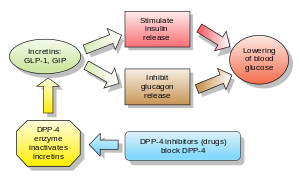 Kerley’s A lines (arrows)
Kerley’s A lines (arrows)Kerley’s B lines (white arrowheads)
Kerley’s C lines (black arrowheads)
Kerley lines are a sign seen on chest radiographs with interstitial pulmonary edema. They are thin linear pulmonary opacities caused by fluid or cellular infiltration into the interstitium of the lungs. They are named after Peter Kerley.
Types
- Kerley A lines
- Longer (at least 2cm)
- Unbranching lines
- Coursing diagonally from the periphery toward the hila in the inner half of the lungs. Caused by distension of anastomotic channels between peripheral and central lymphatics of the lungs.
- Kerley A lines are less commonly seen than Kerley B lines.
- Kerley A lines are never seen without Kerley B or C lines also present.
- Kerley B lines
- These are short parallel lines at the lung periphery.
- These lines represent interlobular septa
- Usually less than 1 cm in length
- Parallel to one another at right angles to the pleura.
- They are located peripherally in contact with the pleura, but are generally absent along fissural surfaces.
- They may be seen in any zone but are most frequently observed at the lung bases at the costophrenic angles on the PA radiograph, and in the substernal region on lateral radiographs.
- Kerley B lines are seen in Congestive Heart Failure (CHF) and Interstitial Lung Diseases (ILD).
- Kerley C lines
- Least commonly seen of the Kerley lines.
- Short, fine lines throughout the lungs, with a reticular appearance leading to spider web appearance.
- They may represent thickening of anastomotic lymphatics or superimposition of many Kerley B line.


